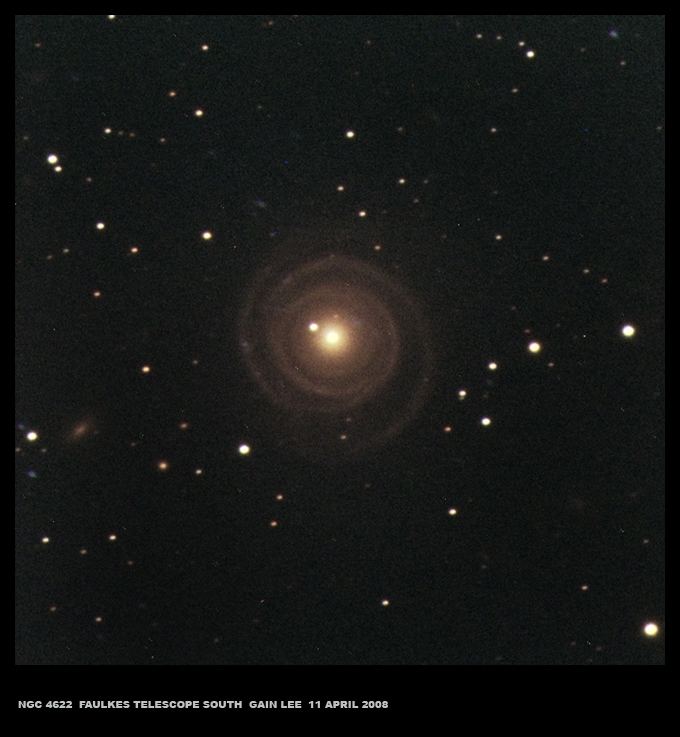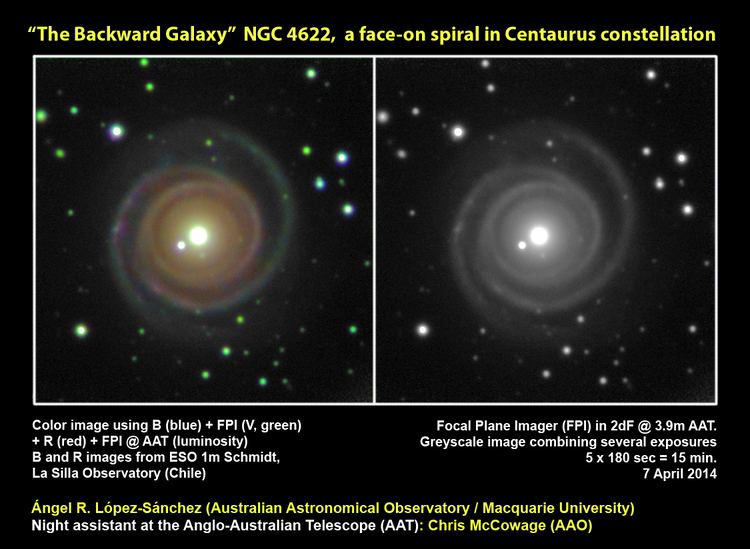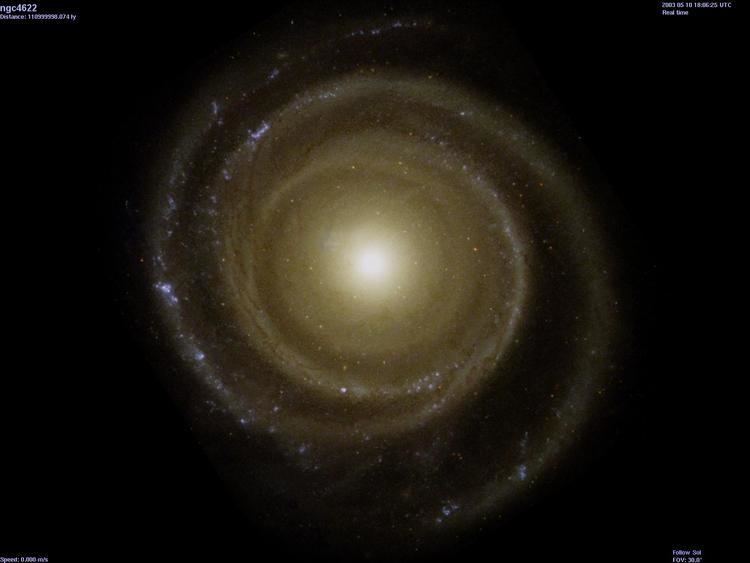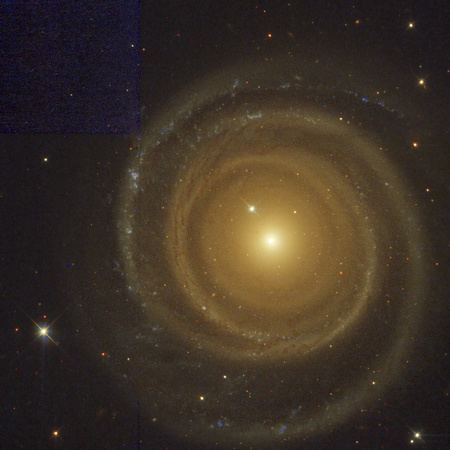Right ascension 12 42 37.7 Redshift 4367 ± 39 km/s Type SA(r)ab Magnitude 12.6 Apparent magnitude (V) 12.6 | Declination −40° 44′ 35″ Distance 200 million ly Apparent size (V) 1′.7 × 1′.6 Constellation Centaurus | |
 | ||
Similar NGC 4603, NGC 4605, NGC 4700, NGC 4710 | ||
13 disharmony answer ngc 4622
NGC 4622 is a face-on unbarred spiral galaxy with a very prominent ring structure located in the constellation Centaurus.
Contents

Spiral structure

The spiral galaxy, NGC 4622 (also called backward galaxy), lies approx. 200 million light years away in the constellation Centaurus. NGC 4622 is an example of a galaxy with leading spiral arms. In spiral galaxies, spiral arms were thought to trail; the tips of the spiral arms winding away from the center of the galaxy in the direction of the disks orbital rotation. In NGC 4622, however, the outer arms are leading spiral arms; the tips of the spiral arms point towards the direction of disk rotation. This may be the result of a gravitational interaction between NGC 4622 and another galaxy or the result of a merger between NGC 4622 and a smaller object.

NGC 4622 also has a single inner trailing spiral arm. Although it was originally suspected that the inner spiral arm was a leading arm, the observations that established that the outer arms were leading also established that the inner arm was trailing.

These results were met with skepticism in part because they contradicted conventional wisdom with one quote being “so you’re the backward astronomers who found the backward galaxy.” The fact that a pair of arms could lead was not easy to accept. Astronomical objections centered on the fact that dust reddening and cloud silhouettes were used to determine that the outer arms lead. The galaxy disk is tilted only 19 degrees from face-on making near to far-side effects of dust hard to discern and because clumpy dust clouds might be concentrated on one side of the disk, creating misleading results.
In response, the “backward astronomers” determined NGC 4622’s spiral arm sense with a method independent of the previous work. The new Fourier component method is actually assisted by the small tilt, and dust reddening and cloud silhouettes are not used in the latest analysis. The Fourier component method reveals two new weak arms in the inner disk winding opposite the outer strong clockwise pair. Thus the galaxy must have a pair of arms winding in the opposite direction from most galaxies. Analysis of a color-age star formation angle sequence of the Fourier components establishes that the strong outer pair is the leading pair.
While the presence of backward arms in a galaxy may seem like an inconvenient truth to many, two independent methods now indicate that NGC 4622’s arms do indeed behave in a very unusual fashion, with the outer arms winding outward in the same direction the disk turns.
A Fourier component image of the arm pairs is shown with one of the pair of arms marked for the newly discovered inner CCW pair (black dots) as well as one of the already known (CW) outer pair (white dots).
